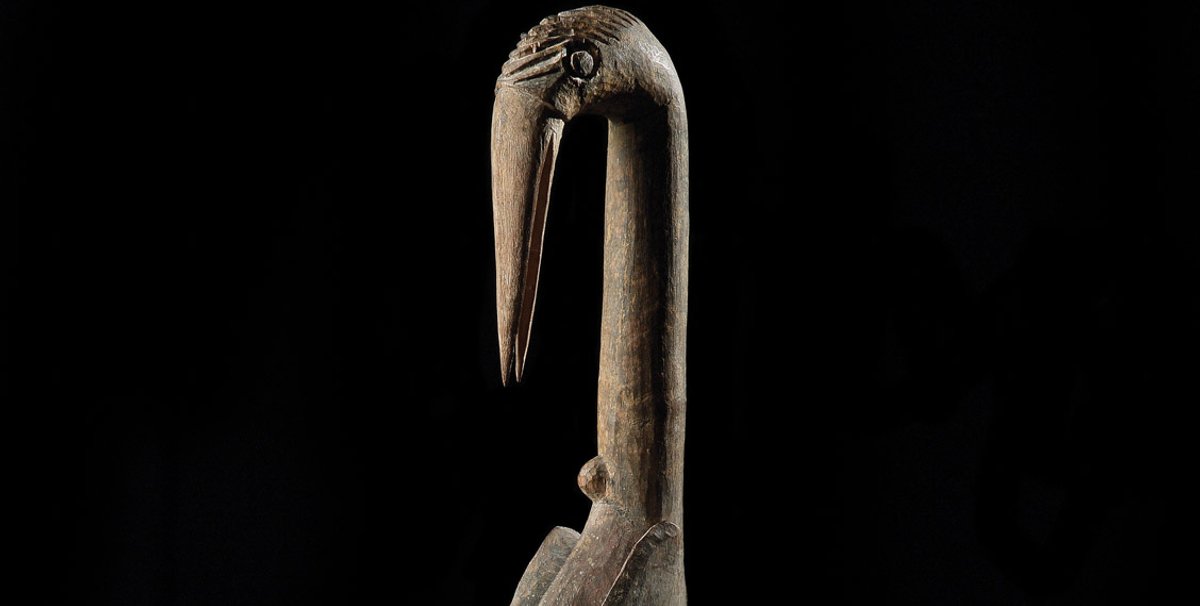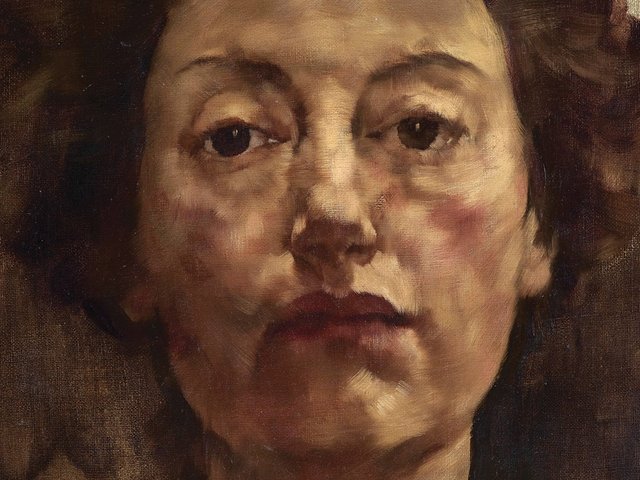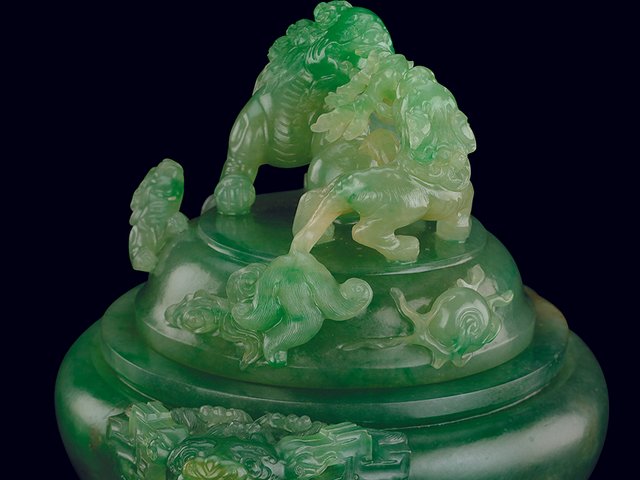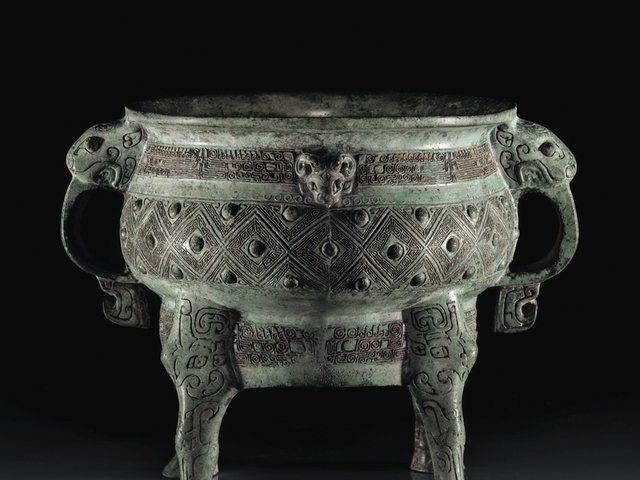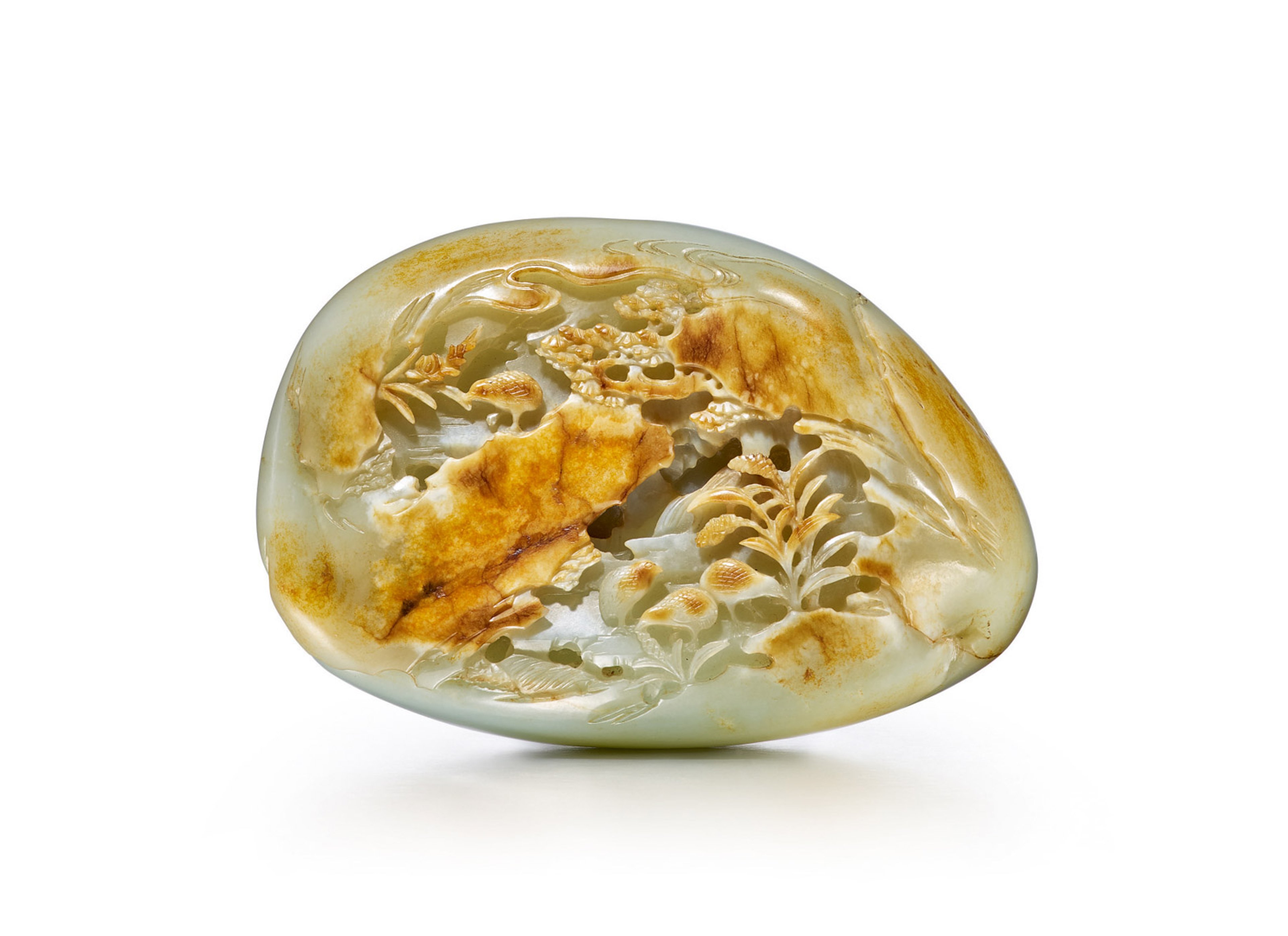
The philanthropists Florence and Herbert Irving gave New York’s Metropolitan Museum of Art around 1,300 Asian works of art in 2015, including this Qing dynasty celadon and russet jade carving of birds in a mountainous landscape. “The motif of the quail and millet depicted on this exceptional jade boulder is commonly seen on porcelains and painted metalwares of the Yongzheng and Qianlong periods, however it is incredibly rare to see the subject applied to a jade surface,” says Angela McAteer, Sotheby’s head of the Chinese works of art department in New York. The Irvings began collecting Asian art in the 1970s mostly via auction houses, and bought this piece in the mid-1980s from Spink and Son in London. Around the same time, James Watt, then the curator of the Met’s department of Asian art, introduced the couple to the museum’s director Philippe de Montebello, who encouraged them to join the board. The collectors agreed that any works in their gift could be resold to finance future acquisitions of Asian art. Celadon and russet jade ‘quail and millet’ boulder, Qing dynasty (1644-1912). Chinese Art from the Metropolitan Museum of Art: the Florence and Herbert Irving Gift, Sotheby’s, New York, 10 September. Estimate $150,000-$250,000 (©Sotheby's)
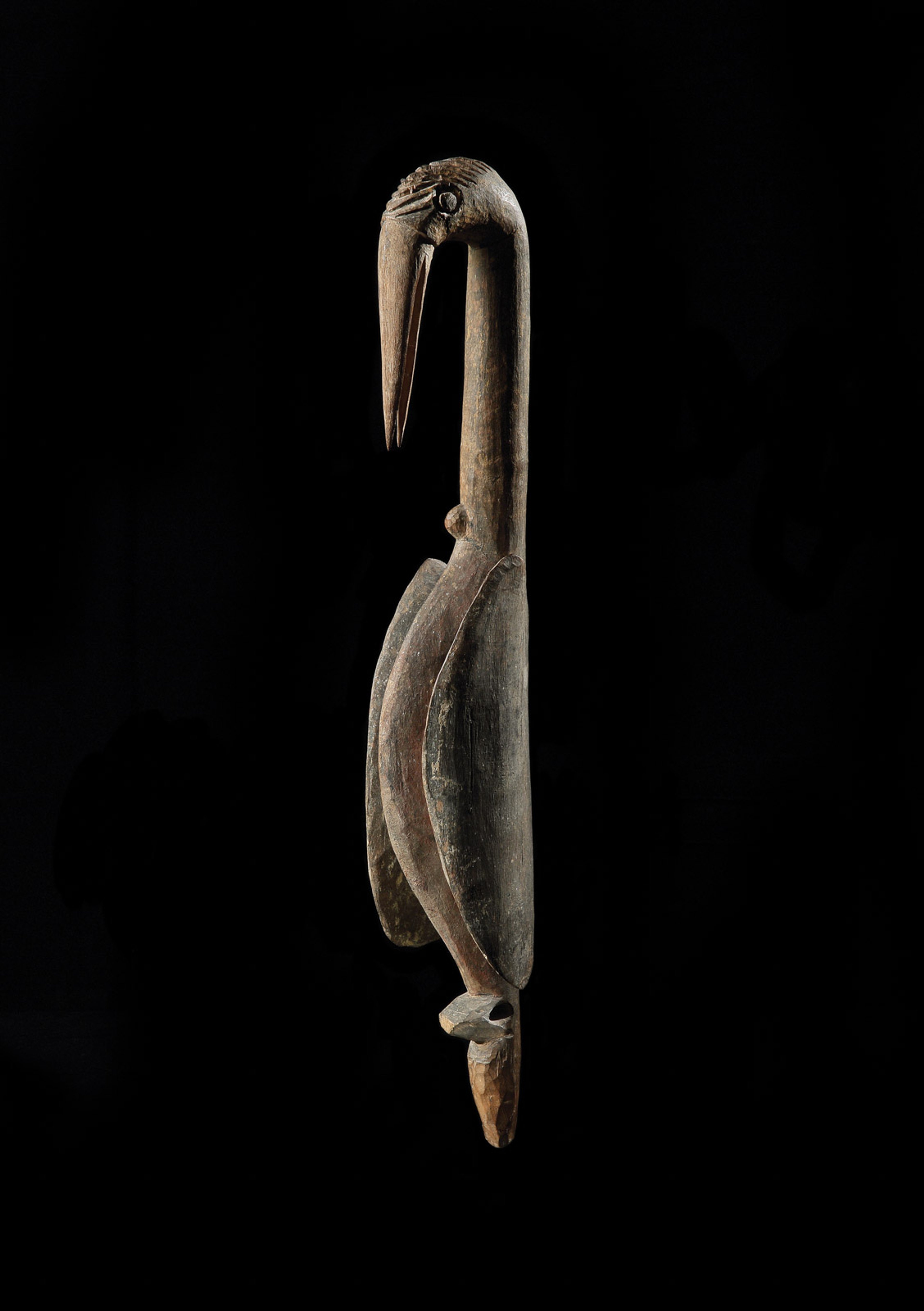
As Paris shrugs off the last of the summer rosé, Parcours du Monde, the city’s annual gallery trail of tribal, Asian and archaeological art, opens around the pretty streets of Saint-Germain-des-Prés. The whole event is aimed at showing non-European art and, broadening its scope for the 18th edition, six galleries specialising in archaeology will join this year, bringing the total number of participants to more than 60. They include the UK-based tribal art and textiles specialist Jonathan Hope, who will exhibit this wooden hornbill figure made by the Abelam people of the Maprik district in Papua New Guinea’s Prince Alexander mountains. “In Abelam culture, the hornbill is associated with the spirit world, the sphere of the ancestors,” Hope says. “It can also serve as a clan emblem and has associations with certain rites concerning hunting and war. This particular effigy would have been fixed into a lintel over the door of a house of spirits called a korumbo.” What is unusual about this example, which stands 64cm tall, is its “elegant, sentinel-like stylisation. Abelam hornbill figures are usually flatter and broader in shape and painted with brighter pigments or imported paint,” Hope says. Figure of a grey hornbill, Papua New Guinea (first half of 20th century). Jonathan Hope at Parcours du Monde, Paris, 10-15 September. €12,000. (©Jonathan Hope)
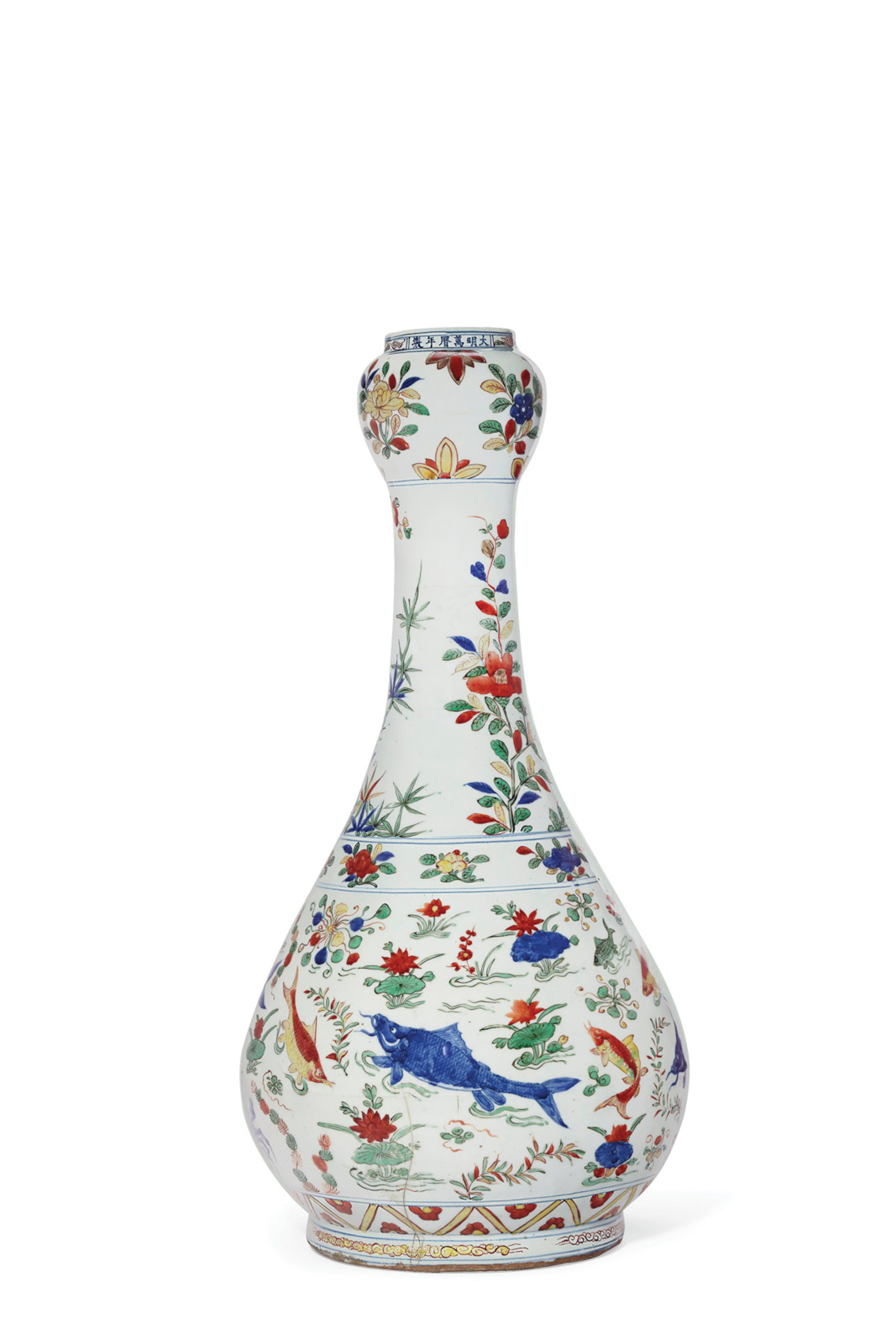
The Art Institute of Chicago is de-accessioning more works of art from its 35,000-Chinese object collection at Christie’s New York this month. The auction follows the $3.15m sale of 22 Chinese jade carvings at a Sotheby’s New York sale in March that benefited the museum’s Asian art acquisition fund, with potential plans for a new Asian wing. Among the 300 or so objects that are hitting the block this month is this Wucai garlic-mouth vase from the Wanli emperor’s reign (1573-1619), part of a selection of Ming and Qing porcelain donated by leading patrons of the Art Institute of Chicago in the early 20th century. A pair of these vases were bequeathed to the museum in the 1954, according to Jessica Chang, a specialist in the auction house’s Chinese art department, who says “there is a very close comparable in the Palace Museum, Beijing, with the same motif, only smaller”, making the larger one a rare find. Wucai garlic-mouth vase, Wanli period (1573-1619). Chinese Works of Art from the Art Institute of Chicago, Christie’s, New York, 12 September. Estimate $200,000-$300,000. (© Christie's)
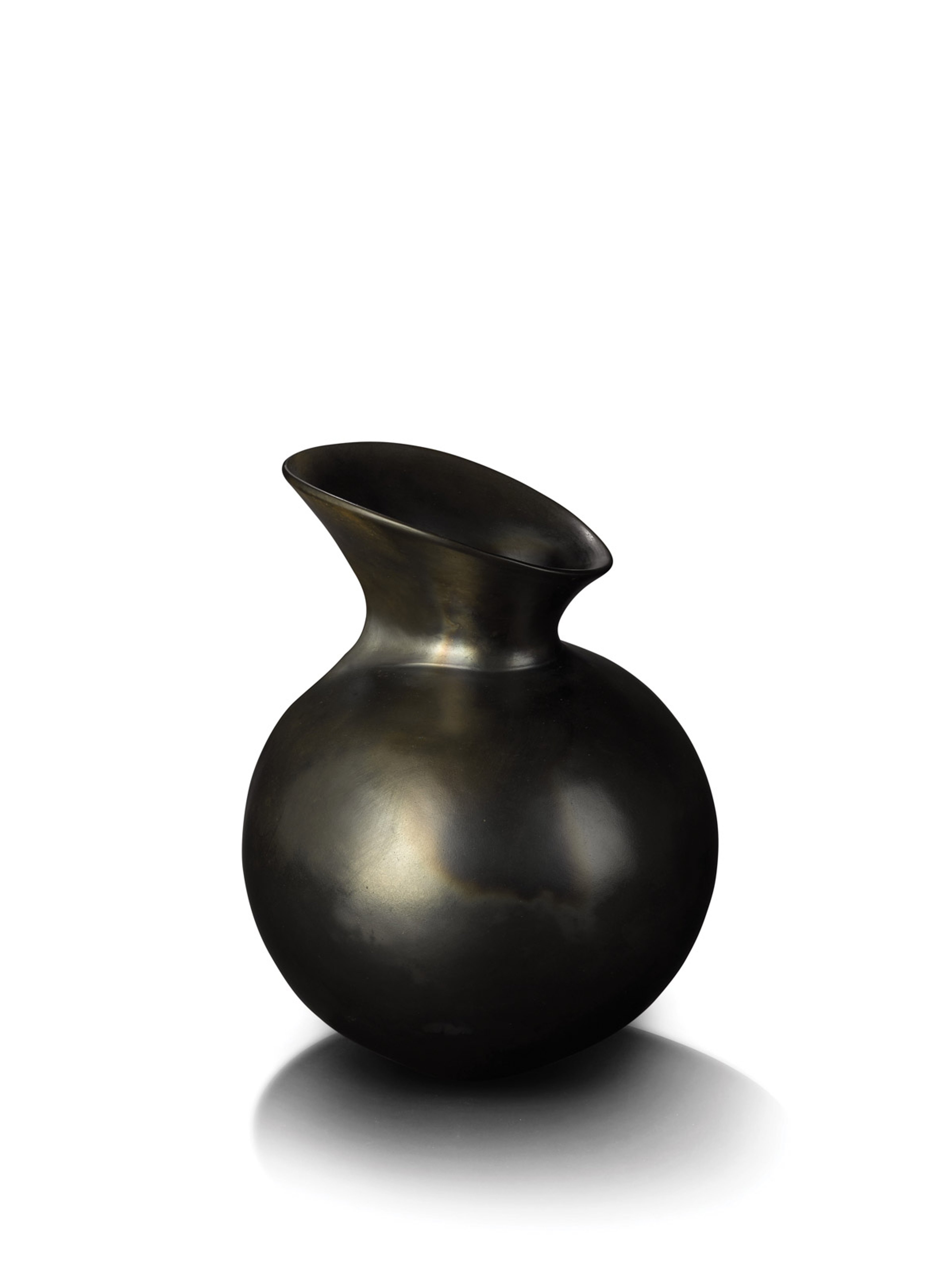
Currently the subject of a solo show titled The Journey of Things at the Sainsbury Centre in Norwich, Kenyan artist Magdalene Odundo became the world’s most expensive living ceramicist when a 1994 vessel by her sold for €200,000 in 2015. Collectors tend to prize vessels with mixed colouring and complex, sculptural shapes, which may explain why this relatively simple burnished and carbonised terracotta pot has a more entry-level estimate. Robin Cawdron-Stewart, the director of Sotheby’s Modern and post-war British art department, says that this vessel, though in good condition, has “a couple of tiny surface rubs”. Magdalene Odundo, Untitled (1983). Made in Britain, Sotheby’s, London, 10 September. Estimate £8,000-£12,000. (© Sotheby's)
The philanthropists Florence and Herbert Irving gave New York’s Metropolitan Museum of Art around 1,300 Asian works of art in 2015, including this Qing dynasty celadon and russet jade carving of birds in a mountainous landscape. “The motif of the quail and millet depicted on this exceptional jade boulder is commonly seen on porcelains and painted metalwares of the Yongzheng and Qianlong periods, however it is incredibly rare to see the subject applied to a jade surface,” says Angela McAteer, Sotheby’s head of the Chinese works of art department in New York. The Irvings began collecting Asian art in the 1970s mostly via auction houses, and bought this piece in the mid-1980s from Spink and Son in London. Around the same time, James Watt, then the curator of the Met’s department of Asian art, introduced the couple to the museum’s director Philippe de Montebello, who encouraged them to join the board. The collectors agreed that any works in their gift could be resold to finance future acquisitions of Asian art. Celadon and russet jade ‘quail and millet’ boulder, Qing dynasty (1644-1912). Chinese Art from the Metropolitan Museum of Art: the Florence and Herbert Irving Gift, Sotheby’s, New York, 10 September. Estimate $150,000-$250,000 (©Sotheby's)
Object lessons: from a Papuan hornbill head to a rare jade carving from New York's Met Museum
Our pick of highlights from upcoming auctions and fairs
